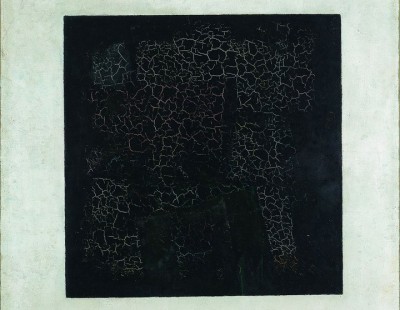-
Usernamenvcrintern
-
Password
Leave password field empty to keep your existing password!
-
Confirm Password


Hello World!
I am... how would you describe me. I'm not a high school student, I'm out of high school, but I'm not in university yet, so I'm not a Uni student either. Is there a name for that? There should be. I'll call myself... an in-betweenster. That's what I am. I'm an in-betweenster.
The one thing I can say about myself is I'm a writer. I'm a storyteller. Have been since I could talk. My parents and grandparents will attest to the fact that I've always some tale to tell, some story buzzing around in my head. English class was always my time to shine.
I will very soon be attending the University of Windsor Creative writing program, so I guess we'll see if that pans out relatively soon. In the meantime, I've been, and will be writing and publishing short stories! And this'll be everywhere, so if I ever do actually get published, I'll make sure to add that here!

Everybody loves a good Personality Quiz
Sep 20, 2018 5 years agoA few years back, I was scrolling through tumblr, and I accidentally stumbled upon my favourite personality quiz that I've ever taken. It doesn't appear to have an official name, but I like to call it the Five Things in a Desert game. Basically, the premise is this; you're standing in a desert, and in the desert with you are five objects that represents a different important aspect of your life. Try the game out; it's pretty fun, and you might learn something about yourself along the way. Use a piece of paper and pen to take notes of your answers, or use your phone/computer. The first thing you see in the desert is a cube. Picture it. How big is the cube? What colour is it? is the surface textured in any way? Are the corners rounded or sharp? Does it have any designs or patterns on it? Is it heavy? Is it hollow? Where is the cube in relation to you? How far is it? Is it planted in the ground, or is it floating in the air? Try to imagine as many details as you can, and jot down your notes for the cube. The second thing you see in the desert is a ladder. How long is the ladder, how wide? What is it made of? What colour is it? Is it upright, laying on the ground or propped up on something? Is it sturdy? Where is it in relation to you? Where is it in relation to the cube? Does the ladder interact with the cube at all? Again, imagine every detail you can and write down your notes for the ladder. The third object you see in the desert is a horse. Yes, a horse, I never said this was a logical desert. How big is the horse? How old? What's the personality of the horse? Is it a shy, quiet horse, or a wild, untamed one? What colour is it? Does it have any markings on it? Where is the horse in relation to you? Where is it in relation to the cube? Where is it in relation to the ladder? What is it doing at the moment? Does the horse interact with the cube or the ladder in any way? Once again, picture as many details as you can write down, under the horse. The fourth object you see is flowers. How many are there, just one or multiple? What colour are they? How big are they? What kind of flower are they? What state are they in, are they flourishing or are they wilting? Are there any distinguishing feature on the petals? Does it have thorns? Where is the flower(s) in relation to you, the cube, the ladder and the horse? Do the flowers interact with the cube, ladder, or horse at all? Write down every detail you can about the flower(s). The fifth and final object you see is a storm. What kind of storm is it? A thunderstorm? A monsoon? An elecrtic storm? A dust storm? A tornado or hurricane? Is it far off on the horizon, or nearer to you? Which direction is it heading, towards you, away from you or past you? Is it mild or severe? Where is it in relation to you, the cube, the ladder, the horse and the flowers? Are any of the objects reacting to the storm? Put down your notes about the storm. Review everything you've written and make sure that everything is spontaneous and sincere. When you're ready, scroll down to find out what your answers mean. ---- The cube represents yourself, your ego, and how you see yourself. If the cube is small, then you're timid, unsure of yourself, and if it is larger, then you're more confident. If the cube is a light colour, then you're optimistic, and if it's darker you're more on the pessimistic end of the spectrum. You can draw your own conclusions from most of your observations. The ladder represents your friends. If the ladder is long, with a lot of rungs, then you have a lot of friends all over; long but with few rungs could mean that your friends and few and far apart. If it's sturdy and stands upright, then you see your friends as reliable, and if it's laying unloved somewhere in the dunes, then you don't see yourself as really needing them. The horse represents your dream partner. If it's a sturdy workhorse, then you dream of a reliable and supportive partner. If the horse is wild and untamed, then you have a thing for bad boys, don't ya? Hehe. Again, most of the interpretations can be made yourself, based on your observations. The flower(s) represent your child(ren). If there are many of them, you have or want to have lots of children. If they're flourishing, then you envision your child(ren) being prosperous and successful. The storm represents your fears and conflicts. If it's far off on the horizon, then everything in your life is relatively peaceful, and if it's coming at you, then you know there's trouble brewing. The interactions that the different objects have is also something to observe; is the ladder propped up on the cube? Your friends rely on you. Is the horse eating the flowers, and is this hurting them or are they regenerating? Draw your own conclusions from what you see in your desert, and leave your results in the comments!
In the Eye of the Beholder
Sep 20, 2018 5 years agoI recently had an interesting discussion with a friend of a friend on the subject of abstract art and the interpretations and meanings that the audience of such art might bring into it, versus the original intention that the artist brought into the piece at its creation. Having been raised in an analytical setting, I have always been keenly aware of that anecdote, where a university professor is analyzing a novel and the author comes up to the front to correct him. The professor then turns to him and says, "With all due respect sir, what do you know? You're just the author." I've always been of the opinion that once art is released, it ceases to be the auteur's. The creator no longer has any power over it, or over how it is received. Every person that looks upon it will see something different, for both biological and psychological reasons. This applies to every kind of art; paintings, photographs, poems, stories. while they are being created, the artist retains some control, choosing specific colors, using subtle allusions and allegories to at least try to direct the inevitable interpretations in a direction. But once the piece is shared, even if only with one person, the artist must surrender control over it or go mad, because one simply cannot control the meaning that different people, with different backgrounds, having had a different combination of influences upon them, will draw from the piece. For example, take Malevich's black square. When I first saw it, my attention was drawn to how the paint is cracked in the center, but not evenly. If you look closely at the paint that isn't cracked, you start to see shapes, as if Malevich put on a second coat of the paint in those specific places. I see a house in those shapes, an old, wood cabin in the middle of a forest in the dead of night. The reason I see that is because of who I am as a person, because of the influences that were had on me in my childhood, because of secret, subconscious fears and dreams and wishes. Someone else might look upon the black square and see the withered remains of a flower lattice, gone black with age, or a shadow cast by a statue, or the darkness inside of humanity, or whatever else. There's seven and a half billion people on this planet, which means that there are, currently, seven and a half billion versions of the Black Square, originally by Kasimir Malevich. While many of those interpretations likely share quite a few of the traits that Malevich meant to project with the project, no black square will ever exist in anyone's mind exactly the same way as it did in Kasimir's mind as he sat down in front of a blank canvas with a paint roller and a bucket of Vantablack. I guess what I'm trying to say is that every human being is different, and this makes it so that there's no way to predict or manipulate how your audience will receive your piece, because once you've sent it out into the world, there will be no one single [name of piece], but rather a million million versions of it, each version existing safely and cozily in a different person's mind. To try and influence your audience, as an artist, and tell them the "correct" answer, is to, simply put, try to change all of these human beings into copies of you. Because, the fact is, there is no "correct" answer. It's not your piece anymore; you've given it to them, so whatever they define as the one true interpretation of it becomes absolutely true and "correct" - for them. As artists, we must learn to step aside and let our works grow and expand and make babies. We must stop trying to rearrange people's heads to make them like our own, and we must give people the space and freedom to add on to our creations. We must stop trying to plug meaning into them, but rather to let our audience draw out the meaning that was already there. Maybe that's the key to world peace.
A life in stories
Jun 28, 2018 5 years agoMost lives are stories of their own. That's normal, right? A single life is a single story. That's normal. If that's the case, then I'm not normal. I knew that. Because if a "normal" life is a story on its own, my life is an amalgamation of stories. The stages of my life are defined by what I was writing at that time. In grade nine, I was plotting and worldbuilding for A Tale of Two Planets, my sci-fi thriller novel. Grade ten was my Guide (a transformative work), grade eleven was Ode to Radio, and right now, my in-betweenster stage is yfysiaf, my choose-your-own story. I suppose the perfect analogy would be that a "normal" life is like a novel, whilst mine is a collection of short stories. Like I was written by Margaret Atwood or something like that. That's not normal, right? I mean, I've met god knows how many writers, and they all still seem to be relatively normal. They have their own story. They create stories, put out stories, but their own specific life is one story, their story. But my life just feels like someone grabbed a fistful of stories from all different universes, lashed them all together with a few rubber bands, and hoped they'd all stay together. That's not normal, right? One person gets one story per life. That's only fair. And even if the one story that defines you isn't your life story, you still usually only get one. Like George Lucas with Star Wars. But I feel like I have a queue! I wake up with this brand new story throwing itself against the walls of my brain trying to get out, and I just barely manage to get that thing out on paper, often in point-form by necessity, when suddenly another one is thrown in there like a grenade into a tank. I never get any quiet in this head of mine. It's exhausting. I remember sitting down with a pencil (only a few months after I first learned how to use one) with one of those stories of mine thrashing desperately around behind my eyes and spilling it all out messily onto paper. This was long, long before I learned about stylistic devices and narrative structure and plot. I just... had a story to tell, and I told it. Since then, it was just one after another, and often multiple at once. I have this folder in my Google Drive labeled "Writing" and it is just chock full of unfinished stories. I have another folder in that folder labeled "Finished". Wanna know how many stories are in there? Three. Everything else is just out there in the Writing folder like a peasant uprising, banging loudly on the doors of the castle, screaming at me over the walls, "Finish us! Just finish us, goddammit! Let us in! Let us in!" That's not normal, right? But then, who's to say. Maybe there is no such thing as normal in the life of a writer. There's just so many of us, and there's such a variety of us; some of us are disciplined, write for five hours every day, meet deadlines, put out lots of books, get rich off of royalties. Some of us have this one world in our mind and can write a billion stories set in it, because they know every inhabitant of this place so well that they can tell you what this one specific person in this specific corner of that specific region had for breakfast three weeks before the inciting incident. Some of us have one story, some have way too many. Some of us finish every single one of them, some have google drive folders full of point-form plots. Point is, we're all defined by stories, be they ours or others', be they one or many. Stories are all that's left of us, they're our legacies, they're our memories, they're our souls. And in the end, we're not just defined by stories. At the very end, we are stories.









